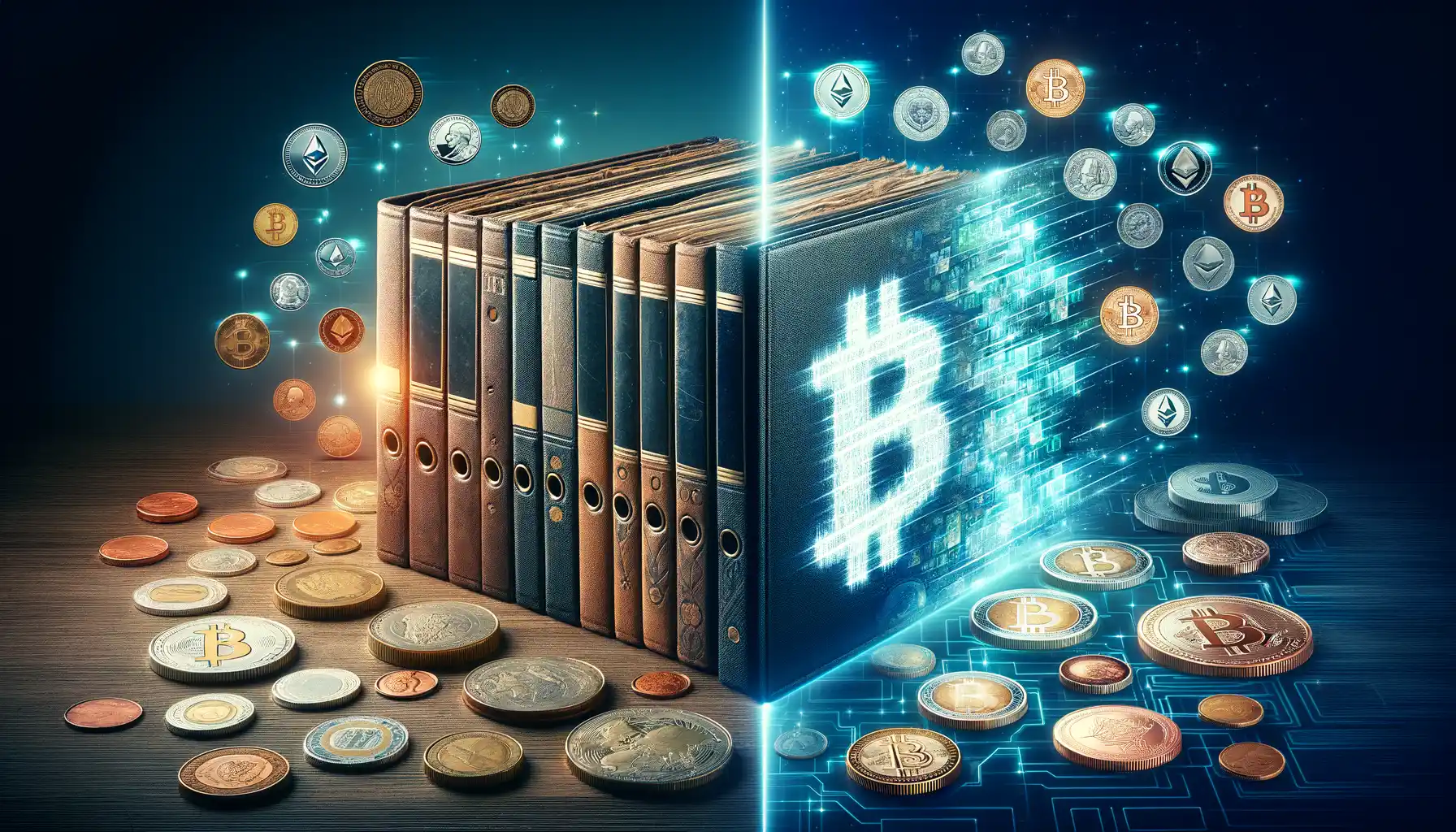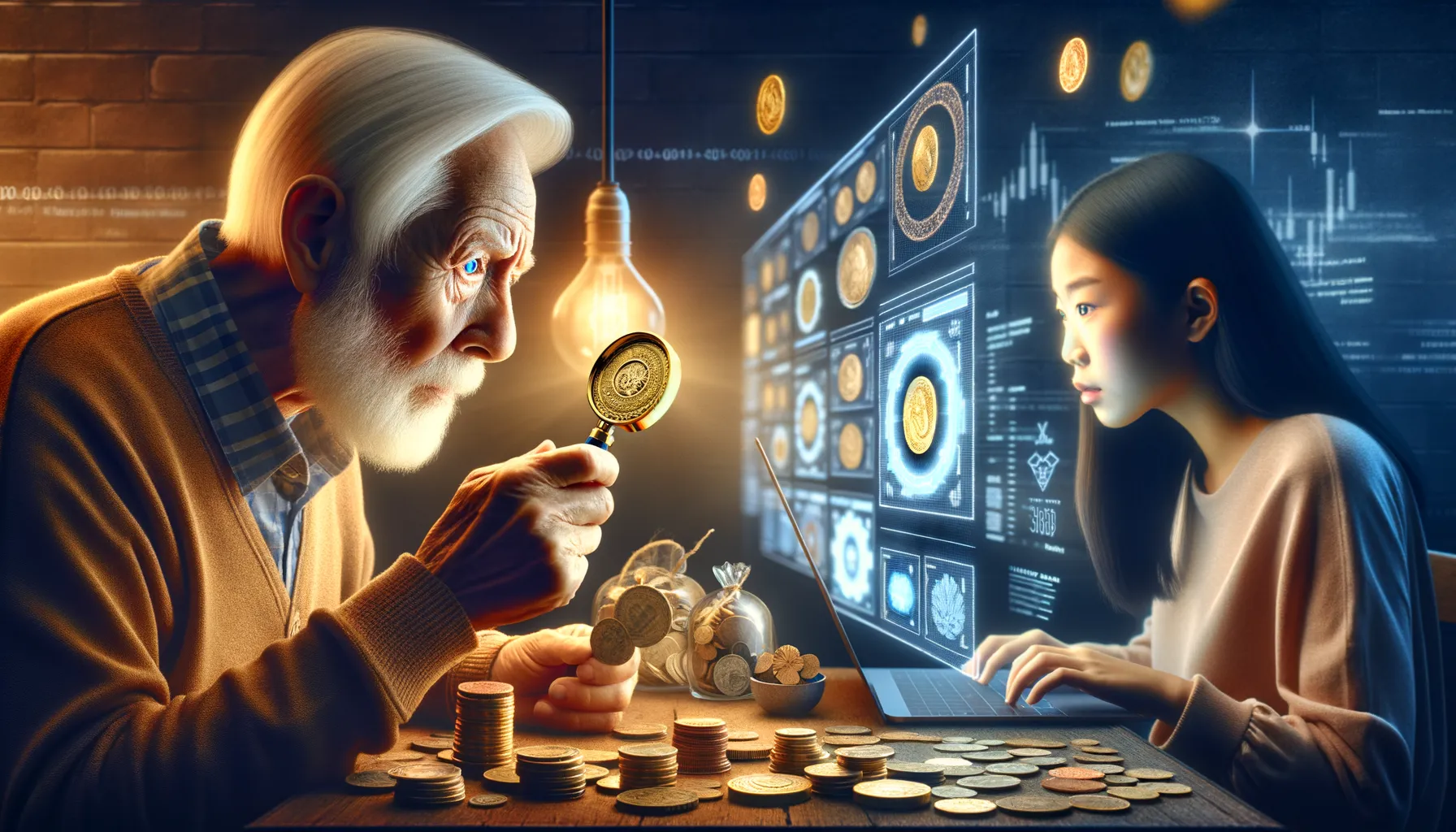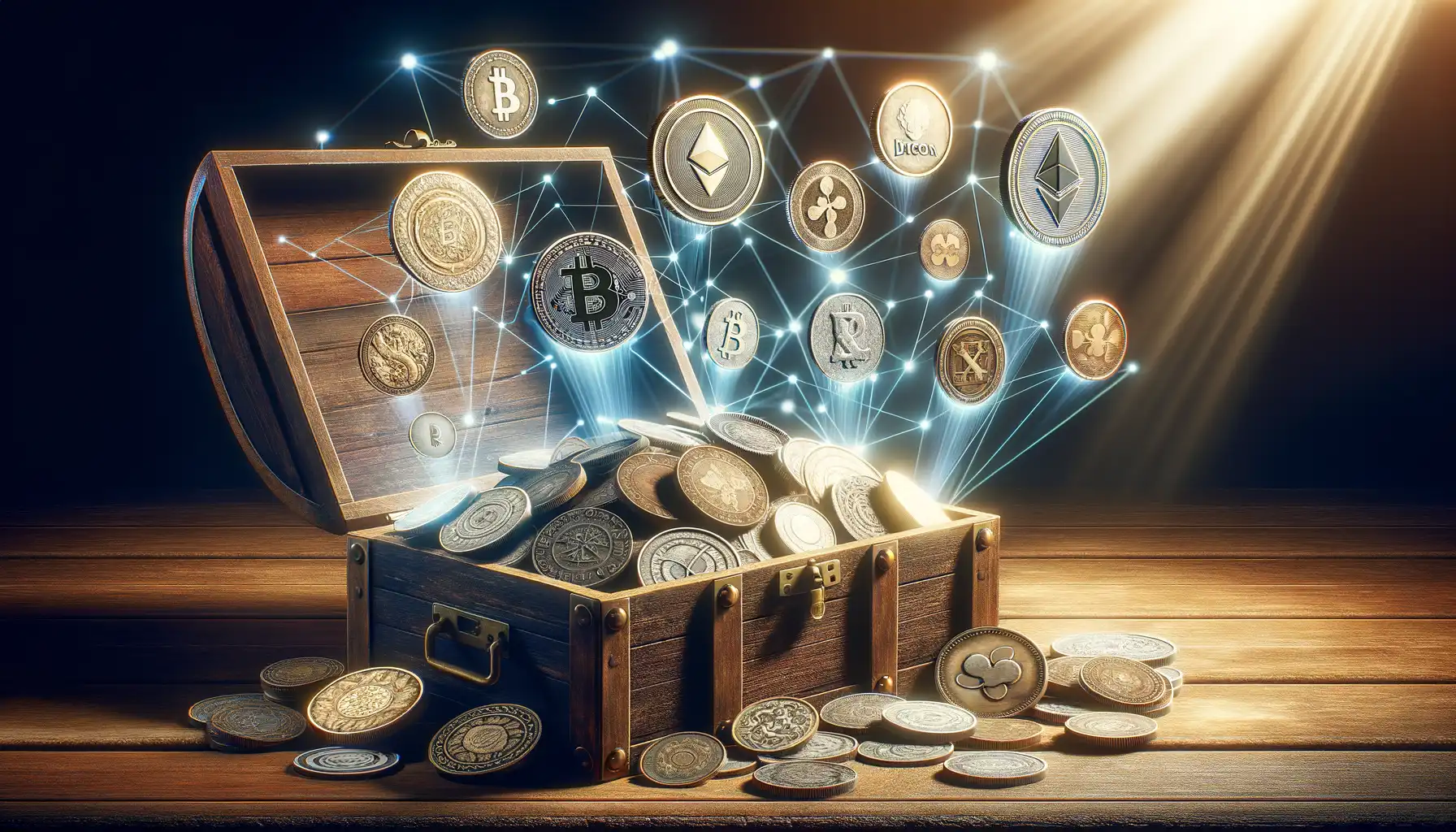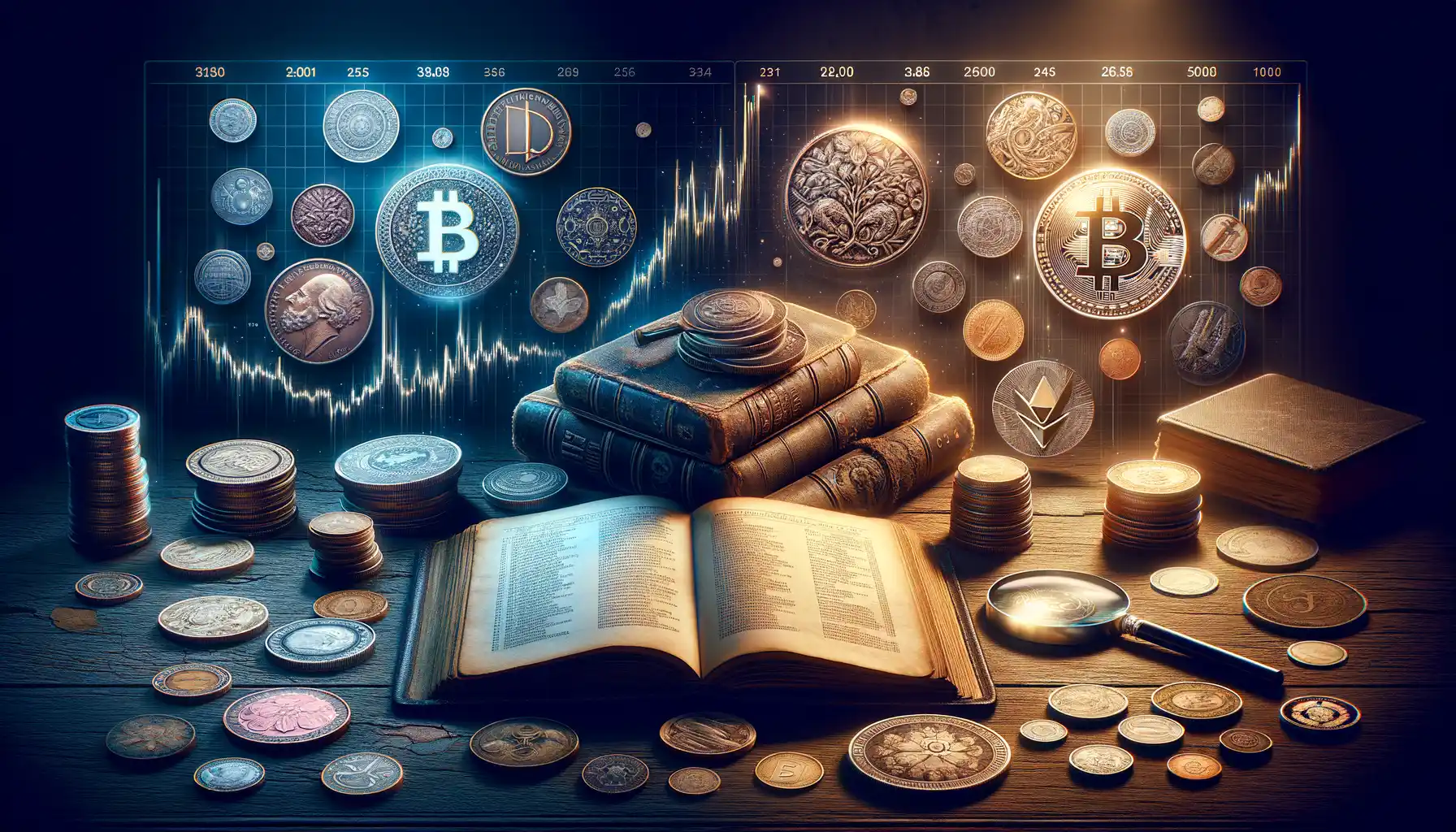Understanding the Intersection of Cryptocurrency and Coin Collecting
The Meeting Point of Tangible and Digital Worlds
Imagine holding a centuries-old coin in your hand, its edges worn smooth by time. Now, picture comparing that tactile experience with owning a cutting-edge cryptocurrency token—no physical form, but imbued with value and potential. At first glance, these seem like opposites: one rooted in history, the other hurtling toward the future. Yet, there’s an intriguing overlap between traditional coin collecting and the world of **cryptocurrency** that’s turning heads in both communities.
For starters, collectors of historical coins are no strangers to the concept of rarity and intrinsic worth. Similarly, cryptocurrency enthusiasts prize scarcity—consider the limited supply of **Bitcoin**, often dubbed “digital gold.” But here’s where it gets fascinating: some modern coin collectors now expand their passion beyond physical relics into **crypto-themed collectibles,** such as blockchain-powered non-fungible tokens (NFTs) that commemorate historic coins or events.
- Imagine owning a digital replica of a Roman denarius, authenticated on the blockchain.
- Or how about a **crypto token** tied to the value of rare gold coins?
It’s this fusion of old-world charm and bleeding-edge tech that’s capturing imaginations—and proving that collecting isn’t just surviving the digital age; it’s thriving in it.
How Cryptocurrency is Reshaping Traditional Coin Collecting

The Shift from Metal to Digital Value
Have you ever held a rare, glittering coin in your hand and felt the weight of history? Now imagine that same sense of rarity, but instead of metal, it’s encoded in thousands of lines of code. That’s exactly how cryptocurrency is flipping the script on traditional coin collecting. The world of numismatics isn’t disappearing—it’s evolving, and fast.
Collectors who once sought Roman denarii or Morgan dollars are now exploring the digital frontiers of value. Think about it: instead of trekking through antique shops, enthusiasts can now hunt for rare digital assets like Bitcoin Ordinals or limited edition NFTs tied to cryptocurrency. It’s like a treasure map rewritten for the 21st century.
Here’s what’s shaking up the scene:
- New definitions of rarity—no longer based on physical wear or mint marks, but on coding uniqueness.
- Blockchain authentication, ensuring absolute proof of ownership and authenticity, unlike counterfeit coins of old.
This doesn’t mean dusty coin albums are obsolete. In fact, they coexist alongside private crypto wallets, proving that both heritage and innovation have their place in the collector’s heart.
The Challenges Faced by Coin Collectors in the Digital Era

The Modern Collector’s Balancing Act
The digital age has swept us off our feet, hasn’t it? Yet, for coin collectors, this whirlwind of technology isn’t all glimmer and gold. Take a moment to think about it—how do you cherish a hobby that thrives on physical, tangible history in a world that’s increasingly intangible?
One of the biggest headaches? Counterfeits. Yes, scams have always been part of collecting, but now they’ve gone high-tech. Blockchain might safeguard cryptocurrencies, but traditional coins stay as vulnerable as ever. When you stumble upon a rare 1794 Flowing Hair dollar, how do you even know it’s authentic when fakes are created with frightening precision these days?
And then there’s the dilemma of attention. Collectors often feel like they’re competing with flashing screens and the dazzle of Bitcoin hype. How do you convince a younger generation that a worn 1916 Mercury Dime holds more value than blinking, virtual tokens?
- The erosion of public interest in physical currency.
- A shrinking network of traditional dealers and appraisers.
- The challenge of storing and insuring valuable collections.
Navigating these challenges takes not just passion but an almost stubborn commitment to honoring the past in a world that seems laser-focused on the future.
Opportunities Brought by Cryptocurrency to Coin Collecting

Bridging the Gap Between Coins and Code
Picture this: the centuries-old tradition of coin collecting meets the sleek, futuristic world of cryptocurrency. It’s like watching an ancient ship sail into a sparkling, digital harbor. With the rise of blockchain technology, collectors now have access to a treasure trove of opportunities that were unimaginable just a decade ago.
For starters, imagine bidding for a rare 17th-century coin in a live auction from your living room, using Bitcoin or Ethereum as payment. No need to worry about converting currencies or waiting for heavy international wire transfers. Blockchain enables lightning-fast transactions with less friction, giving collectors more agility than ever before.
And let’s talk security. Ever feared fraud or counterfeit coins? Through blockchain-based NFTs, collectors can now own digital certificates of authenticity, tied directly to the physical coins themselves. This creates a rock-solid provenance system, putting shady dealings out of commission.
- Access global markets—with crypto, you can connect with sellers halfway across the planet.
- Lower fees—skip the banks and their hefty cuts when making payments.
- Trade 24/7—because cryptocurrency doesn’t sleep, and neither do passionate collectors.
It’s not just a shift; it’s an evolution of what it means to be a coin enthusiast. Prepare to embrace the digital renaissance!
Future Trends in Coin Collecting and Cryptocurrency

The Fusion of Rare Coins and Digital Innovation
In a twist no one saw coming, the tranquil world of coin collecting is colliding with the electrifying buzz of cryptocurrency. Imagine this: holding a rare, centuries-old gold coin in one hand while scanning your phone for the latest NFT-backed digital collectible in the other. Sounds surreal? Welcome to the future of numismatics.
Collectors are already embracing technologies like blockchain to verify authenticity. A coin’s story—its origin, ownership history, and rarity—is being encoded into unalterable digital “ledgers.” No more guesswork or shady deals; with blockchain-based certification, you’re armed with undeniable proof.
On the horizon, we might see physical coins embedded with RFID chips that link directly to their digital records. Want quick access to a coin’s historical significance? Tap your smartphone to it, and voilà—instant intel!
- Tokenized physical collections: Picture owning shares in a rare ancient coin without needing to physically possess it.
- Hybrid virtual showcases: Combine physical coin displays with augmented reality for immersive experiences.
As collecting evolves, enthusiasts will need not only magnifying glasses but also high-speed internet and perhaps even crypto wallets! Ready or not, this blend of tradition and tech is where the magic happens.
